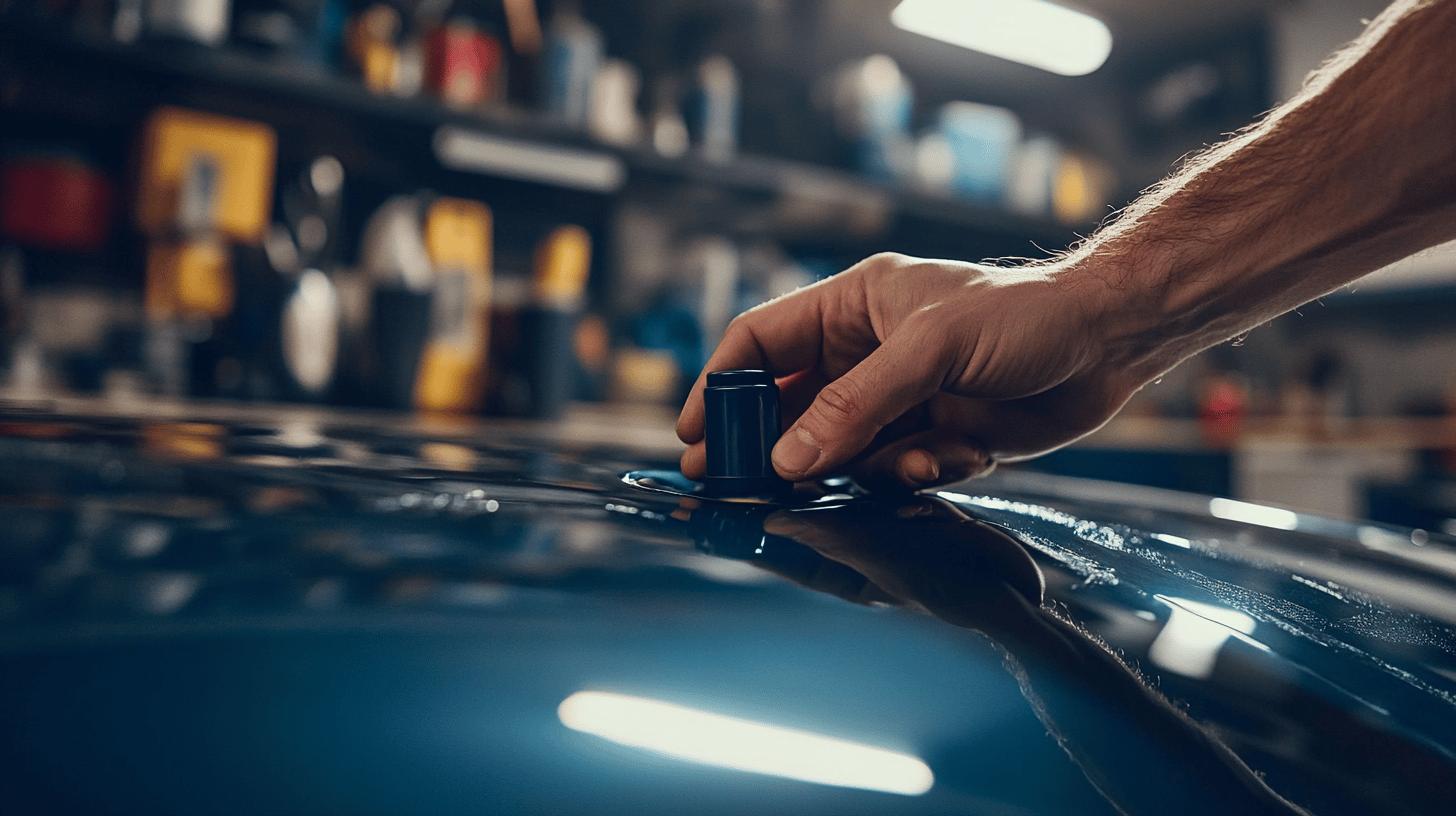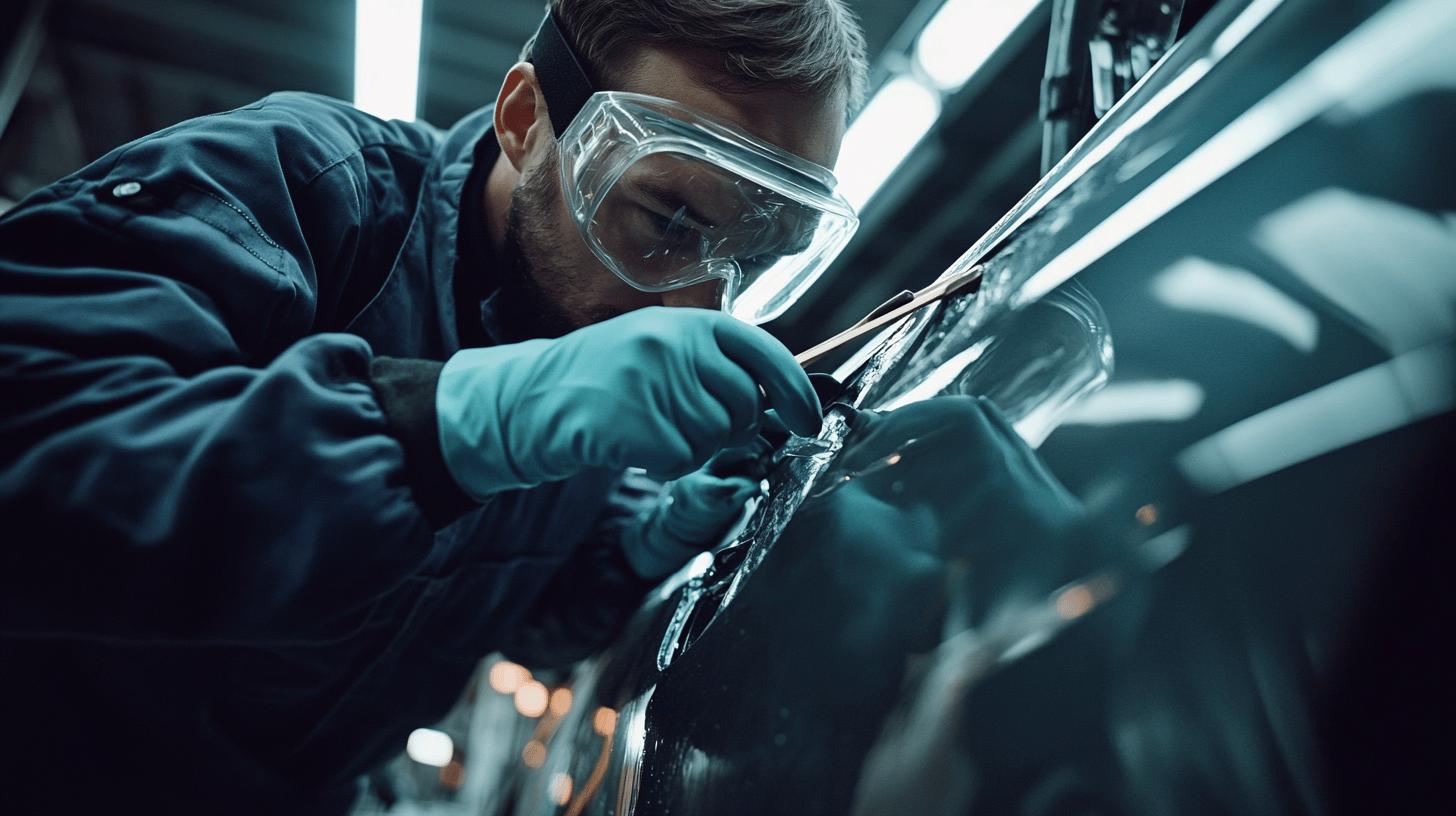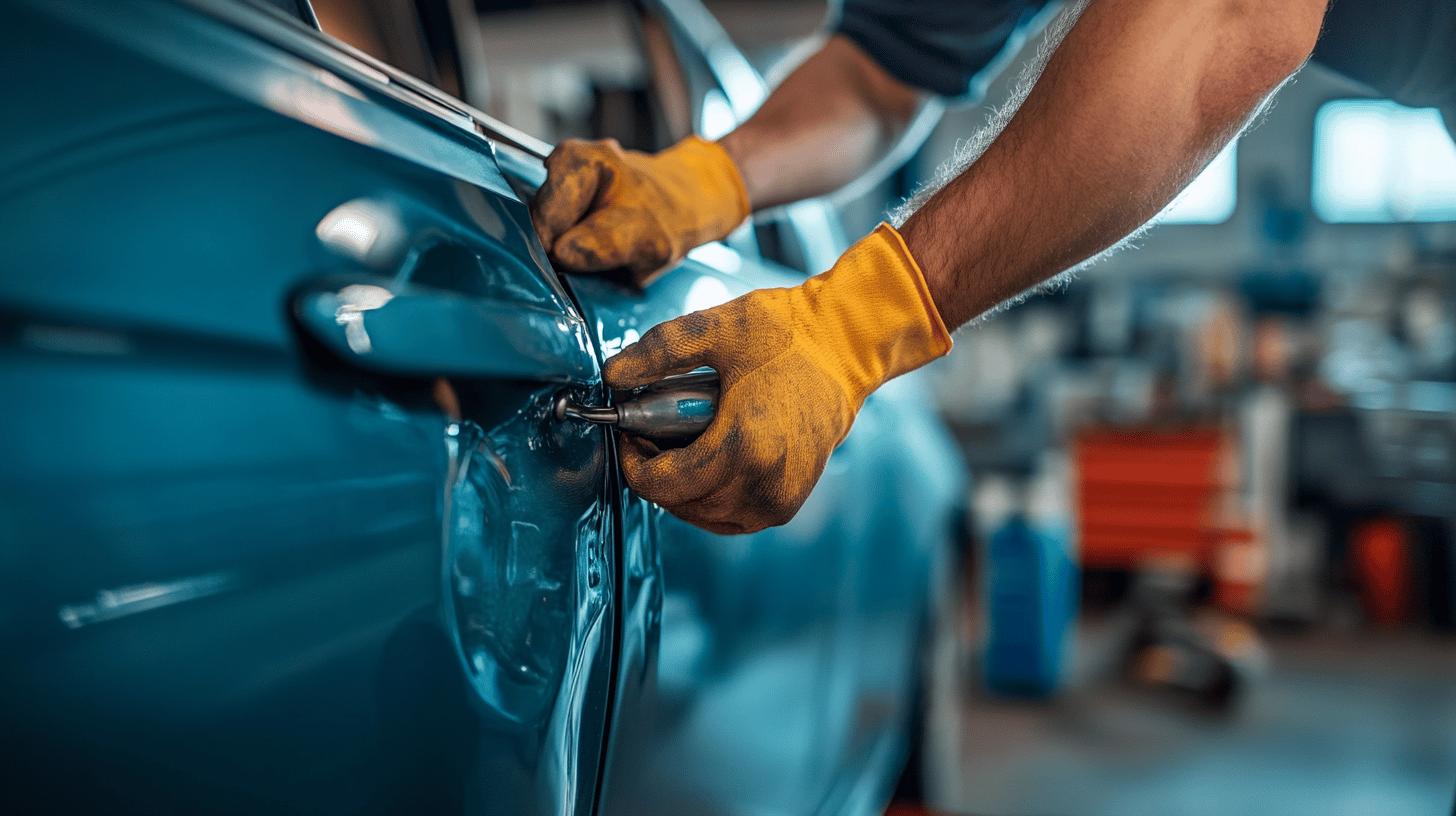Ever wondered how professionals remove those pesky dents without a single drop of paint? Paintless dent removal (PDR) offers a solution that seems almost magical, preserving your car’s original finish while erasing imperfections. This article delves into the intricacies of PDR, exploring the highly skilled techniques required to restore your vehicle’s smooth contours. From the use of metal rods to precision pulling methods, you’ll discover why PDR is the go-to choice for many car owners. Read on to find out how these non-invasive techniques can save both your car’s appearance and your wallet.
Understanding Paintless Dent Removal Techniques
Paintless Dent Removal (PDR) is a highly skilled method for removing minor dents without the need for fillers or repainting. This technique is particularly effective for dents caused by loose trolleys, hail, or car doors, as long as the paintwork remains intact. PDR’s primary advantage is its non-invasive nature, preserving the original paint and finish of the vehicle. The process requires extensive training and expertise, making it a preferred choice among professionals for maintaining a car’s value and appearance.
The two most common PDR techniques are manipulating the panel with metal rods and using a pulling method. In the metal rod technique, technicians use specialised rods to gently massage and push the dented metal back to its original shape from the inside. The pulling method involves attaching a specialised tab to the dented area and using a pulling tool to lift the dent back into place. Both techniques demand precision and skill to ensure the structural integrity and aesthetic appeal of the vehicle are restored.
Advantages of Paintless Dent Removal:
- Preserves original paintwork
- Non-invasive and environmentally friendly
- Cost-effective compared to traditional methods
- Faster repair times
- Maintains vehicle value
Traditional Dent Removal Methods
Traditional dent removal methods, such as the hammer and dolly technique, are commonly used for more severe dents that cannot be addressed through Paintless Dent Removal (PDR). The hammer and dolly method involves using a hammer to tap out dents while a dolly supports the metal from behind. The process requires several steps: firstly, accessing the dented area and cleaning it; secondly, positioning the dolly behind the dent; and thirdly, gently hammering the dent from the front to gradually restore the metal to its original shape. Tools required for this method include a body hammer, a dolly set, and sometimes a heat gun to soften the metal if necessary.
Traditional methods are preferable in situations where the dent is too large or sharp for PDR to be effective. These techniques are also used when the paint has already been damaged or when the dent has affected the structural integrity of the car’s body. Because traditional methods often require repainting, they are more invasive but can be essential for restoring the vehicle’s appearance and safety.
However, traditional dent removal methods come with their own set of pros and cons. On the positive side, they are highly effective for large and complex dents, and they can restore the vehicle’s structural integrity. On the downside, these methods are more invasive, often necessitating repainting, which can increase costs and time. Additionally, traditional methods may not be as environmentally friendly due to the materials and chemicals involved in the repainting process.
| Method | Invasiveness | Effectiveness | Cost |
|---|---|---|---|
| Paintless Dent Removal (PDR) | Non-invasive | High for minor dents | Lower |
| Traditional Methods | Invasive | High for large, severe dents | Higher |
DIY Dent Removal Techniques

DIY dent removal techniques offer car owners a cost-effective and convenient way to fix minor dents at home. These methods can be particularly suitable for plastic bumpers or minor dents that do not require professional intervention. While the effectiveness of each technique varies, they generally provide a practical solution for small, non-complex dents without the need for specialized tools or extensive training.
Several DIY methods are popular among car owners for their simplicity and accessibility. The Plunger Suction Method uses a standard household plunger to create suction and pull the dent out. The Boiling Water Pliability Method involves pouring boiling water over the dented area to make the plastic more pliable, allowing it to be pushed back into place. The Dry Ice Pop Out Method uses the rapid cooling effect of dry ice to contract and pop the dent out. The Hair Dryer and Compressed Air Method applies heat to expand the metal followed by compressed air to contract it, effectively popping the dent out. The Hot Glue and Wooden Dowels Method involves attaching wooden dowels to the dent with hot glue and pulling them to lift the dent. Lastly, Specialty Tool Kits designed for dent removal provide all the necessary tools and instructions for various types of dents.
DIY Dent Removal Techniques:
- Plunger Suction Method: Utilizes a household plunger to create suction and pull out the dent.
- Boiling Water Pliability Method: Uses boiling water to make the plastic more pliable for manual reshaping.
- Dry Ice Pop Out Method: Employs dry ice to rapidly cool and contract the metal, popping the dent out.
- Hair Dryer and Compressed Air Method: Applies heat followed by rapid cooling to expand and contract the metal.
- Hot Glue and Wooden Dowels Method: Involves attaching dowels with hot glue and pulling to lift the dent.
- Specialty Tool Kits: Provides a comprehensive set of tools and instructions for various dent removal techniques.
The Cost of Dent Removal Techniques
Costs for dent removal can vary widely depending on the technique used. Paintless Dent Removal (PDR) typically costs between £50 and £150 per dent. This method is cost-effective for minor dents and preserves the original paintwork. Traditional methods can be more expensive, often ranging higher due to the need for repainting and additional materials. These methods are usually reserved for more severe dents that PDR cannot address.
DIY methods are generally the cheapest option, as they eliminate labour costs. However, they may not always be effective, especially for larger or more complex dents. Tools and materials for DIY dent repair can range from a few pounds for household items like plungers to around £20-£50 for specialised kits. While these methods are economical, their success largely depends on the user’s skill and the nature of the dent.
Factors Influencing Dent Removal Costs:
- Size and severity of the dent
- Type of dent removal technique used
- Labour costs if using professional services
- Materials and tools required for the repair
Recommended Tools for Dent Removal
Having the right tools is crucial for successfully removing dents from your vehicle. The effectiveness of the dent removal process largely depends on the type and severity of the dent, as well as the chosen method. Whether you’re a DIY enthusiast or a professional technician, equipping yourself with the proper tools ensures a smoother, more efficient repair process.
Essential tools for dent removal include suction cups, dent pullers, hammers and dollies, heat guns, and specialised Paintless Dent Removal (PDR) kits. Suction cups and dent pullers are ideal for minor dents and are designed to pull the dented metal back into place. Hammers and dollies are used in traditional dent removal methods to tap out more severe dents. Heat guns are essential for making the metal pliable, facilitating easier reshaping. Specialised PDR kits contain an array of tools for non-invasive dent repair, making them indispensable for professionals aiming to maintain the vehicle’s original paintwork.
Recommended Tools for Dent Removal:
- Suction Cups: Ideal for minor dents, creating suction to pull the metal back into shape.
- Dent Pullers: Used for pulling out dents, providing leverage to lift the dented area.
- Hammers and Dollies: Essential for traditional methods used to tap out severe dents.
- Heat Guns: Used to make the metal pliable, aiding in reshaping the dented area.
- Specialised PDR Kits: Comprehensive kits for non-invasive dent repair, preserving the vehicle’s original paintwork.
Safety Precautions When Removing Dents

Safety precautions are essential when removing dents to ensure both personal safety and the integrity of the vehicle. Wearing protective gear such as gloves and goggles is crucial to protect against sharp edges, flying debris, and harmful chemicals. Proper ventilation is necessary when using chemicals to avoid inhalation hazards. Always follow the manufacturer’s instructions for any tools or kits to prevent misuse that could lead to injury or further damage to the vehicle. When using heat or cold methods, be cautious to avoid damaging the car’s paint or causing thermal stress to the metal.
Safety Measures:
- Wear Protective Gear: Gloves and goggles to protect against sharp edges and debris.
- Ensure Proper Ventilation: When using chemicals to avoid inhaling harmful fumes.
- Follow Manufacturer’s Instructions: For tools and kits to prevent misuse and potential injury.
- Be Cautious with Heat and Cold Methods: To avoid damaging the car’s paint and metal.
Final Words
Understanding Dent Removal Techniques reveals that both Paintless Dent Removal (PDR) and traditional methods have their place. PDR offers a non-invasive solution for minor dents, while traditional methods are suited for larger damage.
DIY approaches provide cost-effective alternatives but come with varying effectiveness. Costs for professional dent removal range widely based on the method. Selecting the right tools and adhering to safety measures are crucial for successful dent removal.
For those considering DIY or professional services, choosing the correct method ensures your vehicle remains in top condition.
Restore your car’s flawless finish – Contact us for expert dent removal services today!
FAQ
What is the easiest way to remove a dent?
The easiest way to remove a dent is by using a plunger or speciality dent puller. These tools create a vacuum that helps to pull the dent out without damaging the paint.
Does boiling water pop out dents?
Boiling water can help pop out dents in plastic bumpers. Pour the water over the dented area, then push from behind to pop it out, taking care not to burn yourself.
Do dent pullers really work?
Dent pullers work effectively for minor and shallow dents. They use suction or adhesive to pull the dented area back into place. However, they might not be suitable for deep or complex dents.
Can you suction out a dent?
Yes, you can suction out a dent using a plunger or a purpose-built suction cup dent puller. This method is cost-effective and usually easy to perform without much skill.

